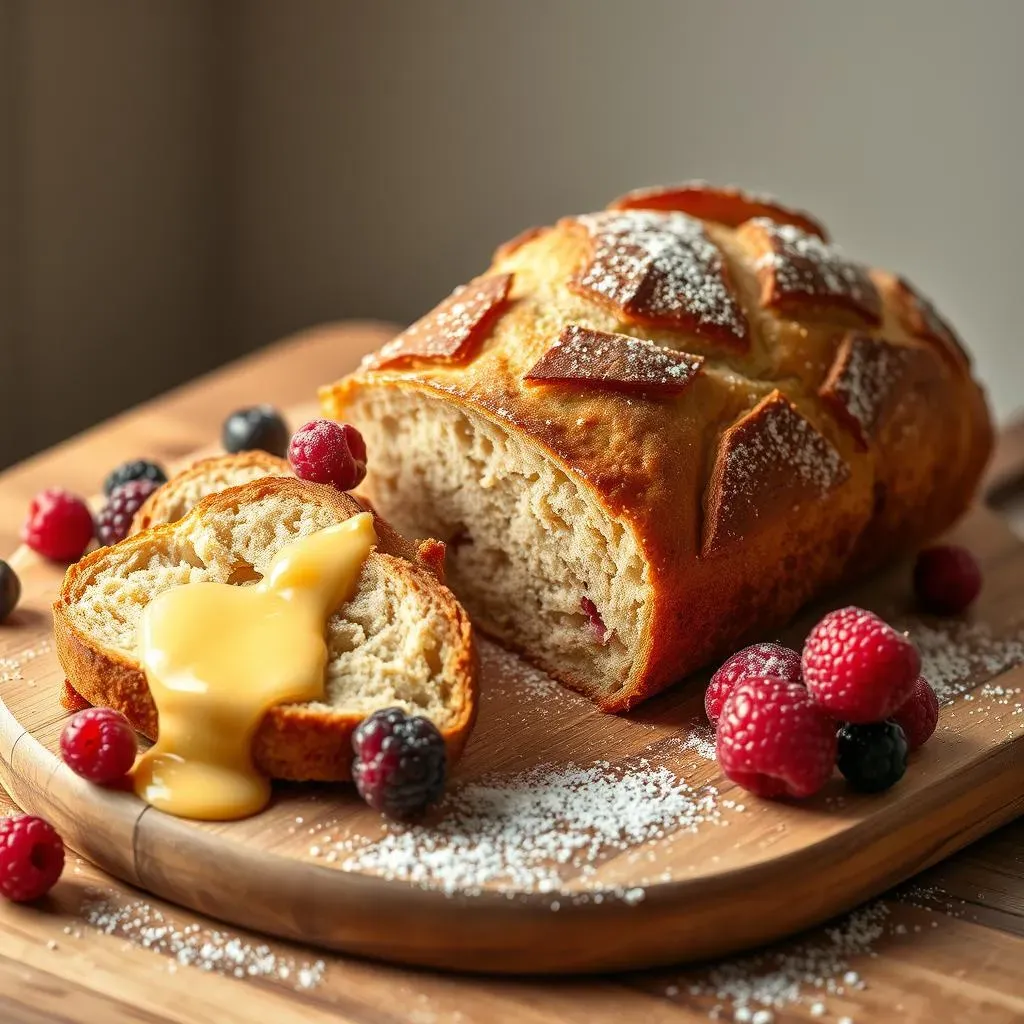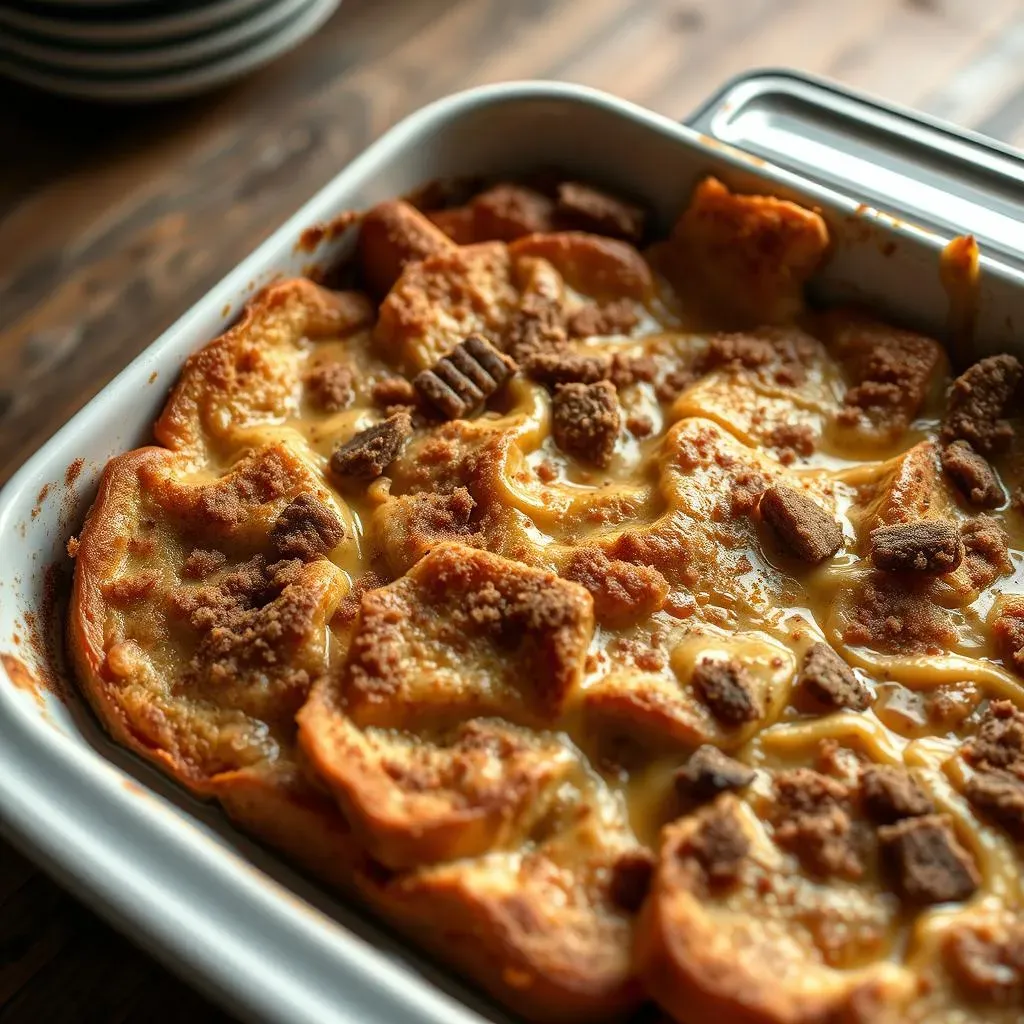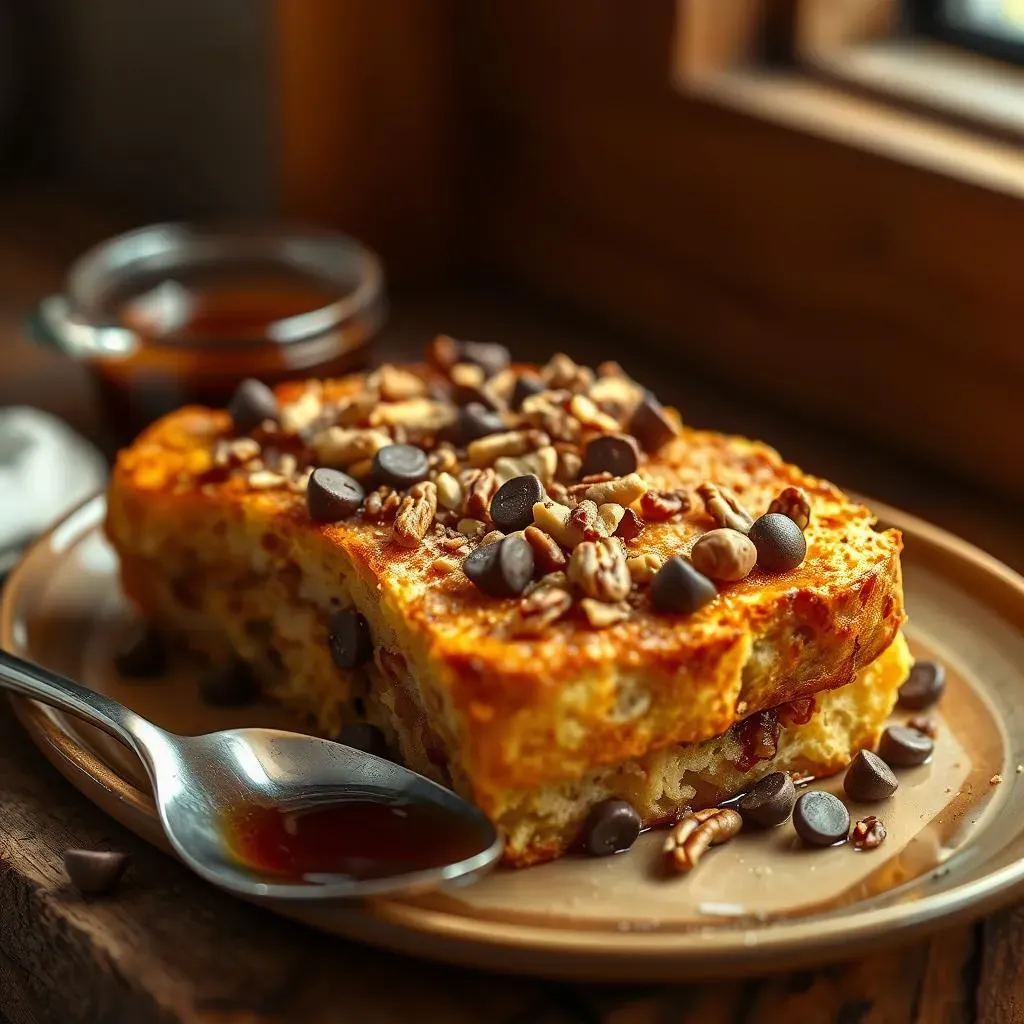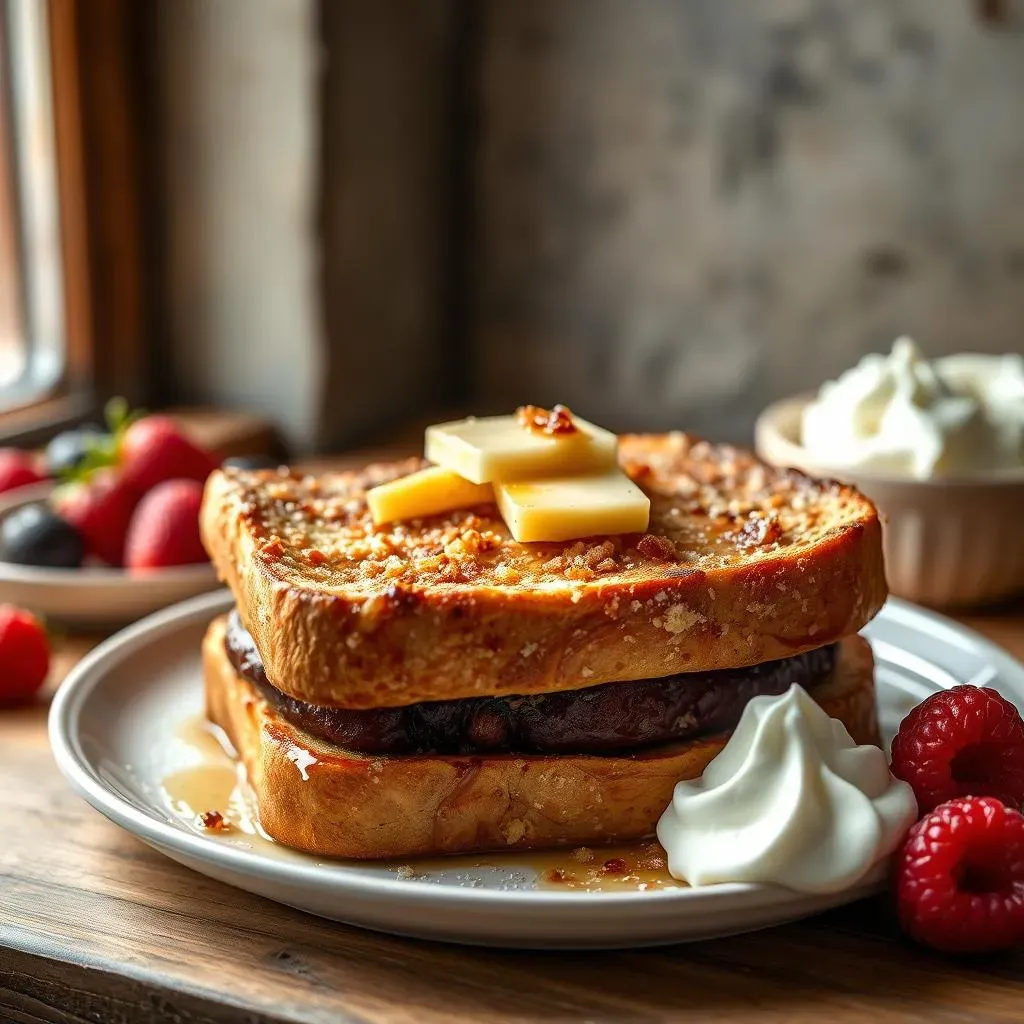Table of Contents
Are you dreaming of a delicious weekend brunch that requires minimal morning effort? Then prepare yourself for the ultimate breakfast revelation: the overnight French toast casserole with sourdough bread! This isn't your average soggy bread pudding; this is a symphony of textures and flavors, a masterpiece of make-ahead convenience. In this article, we'll embark on a culinary adventure, guiding you through the process of creating this incredible dish. First, we'll explore the best types of sourdough bread to use, ensuring your casserole boasts the perfect balance of tangy deliciousness and satisfying chew. Next, we'll dive into a step-by-step, foolproof recipe for the overnight French toast casserole with sourdough bread, leaving no room for culinary confusion. Finally, we'll unleash your creativity with a range of delicious variations and expert tips to elevate your casserole to new heights of breakfast brilliance. Get ready to impress your family and friends (or simply treat yourself!) with this effortless yet extraordinary breakfast sensation. Prepare for a delightful journey into the world of overnight French toast casseroles—your taste buds will thank you!
The Best Sourdough for Overnight French Toast Casserole

The Best Sourdough for Overnight French Toast Casserole
Choosing the Right Sourdough Loaf
The key to a truly exceptional overnight French toast casserole lies in selecting the perfect sourdough bread. You want a loaf with a sturdy crumb that can hold its shape without becoming overly soggy. Avoid overly soft or delicate sourdoughs; those are better suited for sandwiches. Instead, opt for a rustic, country-style sourdough, or even a slightly older loaf (a day or two old is ideal). The slight dryness helps the bread absorb the custard beautifully without falling apart. Think of it like this: you want a bread that can stand up to the custard, not dissolve into it!
A good rule of thumb is to look for a sourdough with a tangy flavor and a slightly chewy texture. This will complement the sweetness of the custard, creating a delightful balance. Too much sweetness, and your casserole will be cloying; too much tang, and it might be too sharp. This balance is key. If you’re baking your own sourdough, a simple sourdough recipe works wonders. If you're buying from a bakery, ask about their heartiest loaf.
Sourdough Type | Ideal Characteristics | Suitable for Casserole? |
|---|---|---|
Rustic Country Sourdough | Sturdy crumb, slightly chewy texture, tangy flavor | Yes |
Artisan Sourdough | Dense crumb, complex flavor, good structure | Yes |
Sandwich Sourdough | Soft crumb, mild flavor | No (too soft) |
Understanding Crumb Structure and Texture
The crumb of your sourdough is crucial. You're aiming for a bread that holds its shape, absorbing the custard without disintegrating. A dense, open crumb is ideal; it allows the custard to penetrate evenly, creating a moist and flavorful casserole. A tight crumb, on the other hand, might resist the custard, leading to dry spots. If you have a loaf with a particularly tight crumb, consider lightly toasting the cubed bread before adding it to the custard to help it absorb more liquid. This added step ensures even moisture distribution.
Think about the texture you want in your final product. Do you prefer a more bread-pudding-like consistency, or something with a bit more structure? A denser sourdough will yield a firmer casserole, while a slightly less dense one will produce a softer result. Experiment with different sourdoughs to find your perfect match! For a deeper dive into sourdough varieties, check out our guide on the difference between French bread and sourdough.
- Look for a sturdy crumb
- Avoid overly soft or delicate loaves
- A slightly older loaf is best
The Role of Sourdough Flavor in the Casserole
The tanginess of your sourdough will significantly influence the overall taste of your casserole. A bolder, more pronounced sourdough flavor will create a more complex and savory profile, while a milder sourdough will result in a sweeter, more delicate casserole. Consider the other ingredients in your recipe; if you're using a lot of sweet elements (like maple syrup or brown sugar), a tangier sourdough will help balance the sweetness. If you're keeping it simpler, a milder sourdough might be a better choice.
Remember, a little experimentation goes a long way! Don't be afraid to try different sourdoughs to discover your favorite combination. You can even create a blend of sourdoughs for a unique and nuanced flavor profile. The world of sourdough is vast and varied; embrace the possibilities! If you’re looking for a recipe to make your own sourdough, check out our 7-grain sourdough bread recipe for a flavorful and texturally interesting option.
Mastering the Overnight French Toast Casserole Recipe

Mastering the Overnight French Toast Casserole Recipe
Prepping the Bread: The Foundation of Flavor
Before you even think about custard, the bread is king! Start by cutting your chosen sourdough into roughly 1-inch cubes. Don't stress about perfect uniformity; rustic is good here. The goal is to create pieces that are large enough to retain their shape but small enough to soak up the custard evenly. If you're using a particularly dense sourdough, you might want to lightly toast the cubes in the oven for a few minutes before proceeding. This step helps prevent overly soggy results and ensures the bread doesn’t absorb too much of the custard mixture. This little trick is a game-changer for texture!
Once your bread is prepped, lightly grease your chosen baking dish. A 9x13 inch pan is a classic, but you can use whatever you have on hand, as long as it’s oven-safe. Arrange the bread cubes in a single layer, ensuring they're not overcrowded. This allows for even custard penetration. For a more detailed guide on sourdough baking, check out our ultimate guide to sourdough.
- Cut sourdough into 1-inch cubes
- Lightly toast dense sourdough before using
- Arrange cubes in a single layer in a greased baking dish
Creating the Custard: The Heart of the Casserole
The custard is where the magic happens. In a large bowl, whisk together your eggs, milk, cream, sugar, spices (cinnamon is a must!), and vanilla extract. Make sure to whisk vigorously until everything is well combined and slightly frothy. This ensures that the custard is evenly distributed throughout the bread and creates a smooth, creamy texture. The goal is a smooth, homogenous mixture that will coat the bread cubes beautifully. You can also add a pinch of salt to balance the sweetness; trust me, it makes a difference!
Once the custard is ready, gently pour it over the bread cubes in your baking dish. Use a large spoon or spatula to gently toss the bread, ensuring that every piece is coated in the custard. Don't be afraid to get your hands a little messy here; it's a rewarding process! After this, cover the dish with plastic wrap and refrigerate it overnight (or for at least 8 hours). This allows the bread to fully absorb the custard, resulting in a wonderfully moist and flavorful casserole. For more tips on baking with sourdough, take a look at our French bread from sourdough starter guide.
Ingredient | Quantity (adjust to taste) | Notes |
|---|---|---|
Eggs | 4-6 large | More eggs = richer custard |
Milk | 1-2 cups | Whole milk is recommended |
Heavy Cream | 1/2 - 1 cup | Adds richness and creaminess |
Sugar | 1/2 - 1 cup | Adjust to your sweetness preference |
Cinnamon | 1-2 tsp | Don't be shy with the cinnamon! |
Baking to Perfection: Achieving That Golden Crust
The next morning, preheat your oven to 350°F (175°C). Remove the casserole from the refrigerator and give it a gentle stir. This ensures even baking and prevents any custard from settling at the bottom. If you're feeling fancy, you can sprinkle a crumble topping (brown sugar, flour, butter, and cinnamon) over the top before baking. This adds a delightful crunch and extra sweetness. It’s optional, but highly recommended!
Bake the casserole for 45-60 minutes, or until it's golden brown and set. The baking time will depend on your oven and the size of your baking dish. Start checking for doneness around the 45-minute mark. A toothpick inserted into the center should come out clean. If it's still a little wet, bake for another 10-15 minutes. Once it’s baked, let it cool slightly before serving. Serve warm and enjoy! For another delicious sourdough recipe, try our amazing French toast recipe.
Tips and Variations for Your Perfect Overnight French Toast Casserole with Sourdough Bread

Tips and Variations for Your Perfect Overnight French Toast Casserole with Sourdough Bread
Sweet and Savory Twists: Beyond the Basics
Let's face it, the classic cinnamon-sugar French toast casserole is amazing, but sometimes you crave a little adventure! Why not experiment with different flavor profiles? Adding chopped nuts (pecans, walnuts, or even almonds) to the custard provides a delightful textural element and a boost of flavor. Consider adding dried fruits like cranberries, raisins, or chopped apricots for bursts of sweetness and chewy goodness. A handful of chocolate chips can elevate the casserole to decadent new heights. For a more sophisticated touch, try incorporating a teaspoon of orange zest or a splash of Grand Marnier to the custard for a subtle citrusy note.
Feeling adventurous? Embrace the savory side! Think about adding some crumbled bacon or sausage to the bread cubes before adding the custard for a hearty and satisfying brunch. A sprinkle of shredded cheese (cheddar, Gruyere, or even a sharp provolone) before baking adds a salty, umami counterpoint to the sweetness. Don't be afraid to experiment and find your own unique flavor combinations! For more inspiration, try our French toast with sourdough recipe for additional ideas.
- Add chopped nuts for texture
- Incorporate dried fruits for sweetness
- Experiment with chocolate chips for decadence
- Add bacon or sausage for a savory twist
- Sprinkle cheese for a salty counterpoint
Customizing Your Casserole: Texture and Presentation
The beauty of the overnight French toast casserole is its adaptability. Want a crispier top? Broil the casserole for the last few minutes of baking. Prefer a softer, more pudding-like texture? Reduce the baking time slightly, or add a bit more milk to your custard. Want a more visually appealing casserole? Arrange the bread cubes in an aesthetically pleasing pattern before adding the custard. You can even layer in different fruits or nuts for a beautiful, visually appealing effect. Let your creativity shine!
Don't be afraid to play with the toppings, either! A dusting of powdered sugar, a drizzle of maple syrup, or a dollop of whipped cream can transform your casserole from a simple breakfast into a luxurious brunch. Consider adding a scoop of vanilla ice cream for a truly decadent treat! Remember, the best casserole is the one you enjoy the most, so feel free to experiment and personalize it to your liking. Explore more sourdough bread options with our easy sourdough French bread recipe.
Desired Texture | Baking Adjustment | Custard Adjustment |
|---|---|---|
Crispier Top | Broil for the last few minutes | None |
Softer Texture | Reduce baking time | Add more milk |
